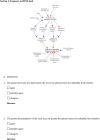A participatory approach to model the neighbourhood food environment
- PMID: 38266019
- PMCID: PMC10807759
- DOI: 10.1371/journal.pone.0292700
A participatory approach to model the neighbourhood food environment
Abstract
Inequalities in exposure to a health-promoting local food environment have been implicated in the generation of inequalities in diet-related behaviours and outcomes, including obesity and diabetes. Increasingly, poor diet and diet-related disease have been characterised as an emergent property of a complex system and, as such, the drivers of poor diet may be better understood by using a complex system perspective. In this study, we describe a participatory approach for understanding the system drivers of unhealthy food consumption. System dynamics (SD) was used to identify, understand, and visualise the elements of the neighbourhood food retail system that influence individuals' eating behaviour. Group Model Building (GMB), undertaken online with stakeholders (n = 11), was used to funnel existing knowledge and evidence on urban food environments and to build a conceptual system map of the local food retail environment inclusive of the drivers that influence the decision to purchase and consume meals that are high in fat, salt, and sugar (HFSS), and calories. The GMB was organised as a knowledge elicitation process involving a questionnaire, a workbook, and a structured workshop. The GMB generated a comprehensive causal loop diagram (CLD) of the retail environment inclusive of the drivers that influence the decision to purchase and consume unhealthy meals. The CLD was designed around two main variables (i) exposure to food outlets and (ii) food consumption. The system map built during the Group Model Building session linked exposure to food outlets with the possibility to purchase and consume unhealthy meals. The effectiveness of this link will be tested in an Agent-Based model. The conceptual model illustrates the complexity of the factors responsible for inequalities in unhealthy eating. The GMB approach provides a basis for building an agent-based model for local authorities to characterise their food retail environment, uncover potential leverage points for interventions and test them 'in silico' in a virtual environment.
Copyright: © 2024 Karapici, Cummins. This is an open access article distributed under the terms of the Creative Commons Attribution License, which permits unrestricted use, distribution, and reproduction in any medium, provided the original author and source are credited.
Conflict of interest statement
The authors have declared that no competing interests exist.
Figures












References
-
- Richardson A, Ghosh-Dastidar M, Beckman R, Flórez KR, DeSantis A, Collins RL, et al.. Can the introduction of a full-service supermarket in a food desert improve residents’ economic status and health? Annals of Epidemiology. 2017;27(12):771–6. doi: 10.1016/j.annepidem.2017.10.011 - DOI - PMC - PubMed
MeSH terms
Substances
LinkOut - more resources
Full Text Sources

